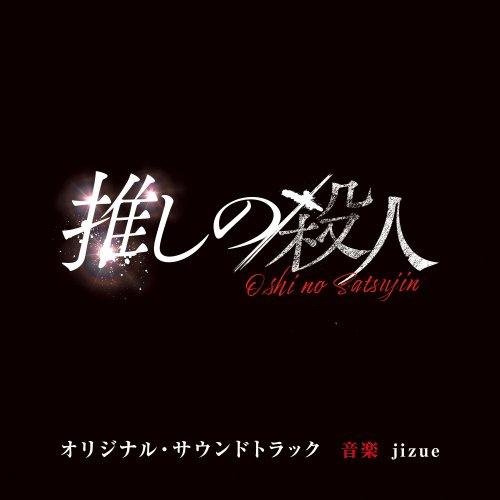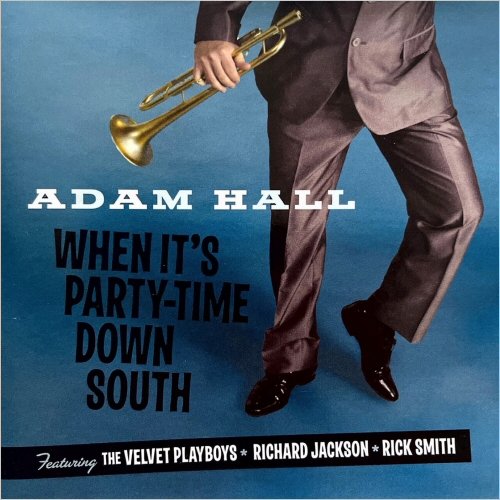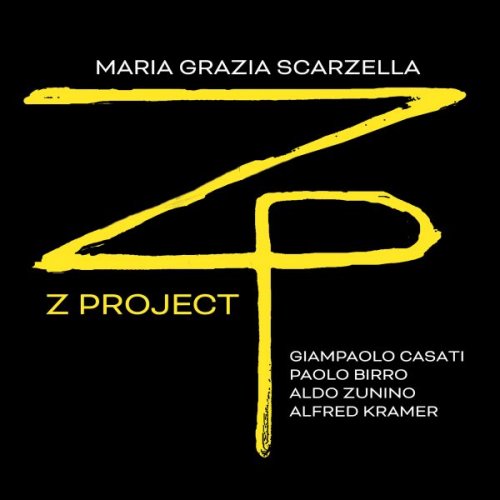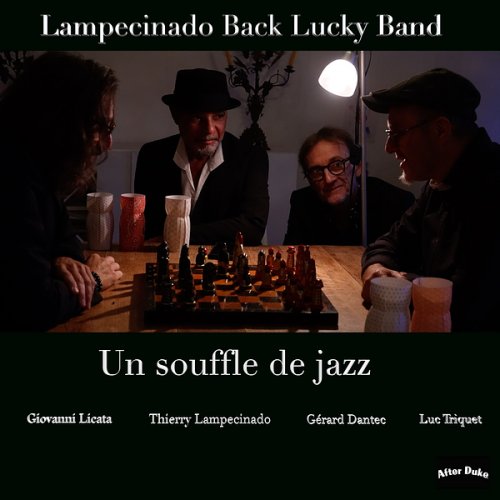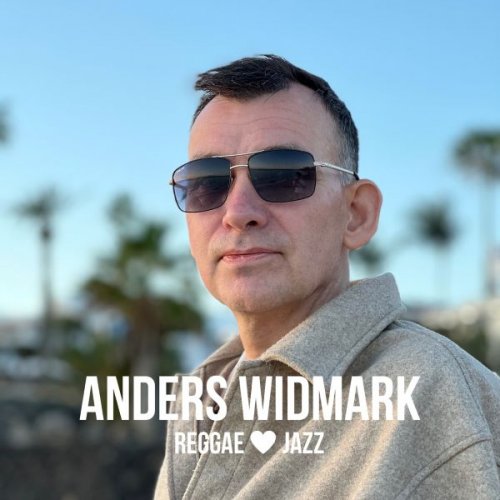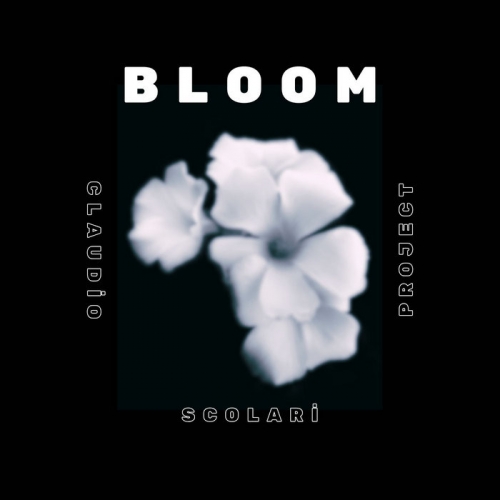Rodrigo Amado The Bridge - Further Beyond (2025)
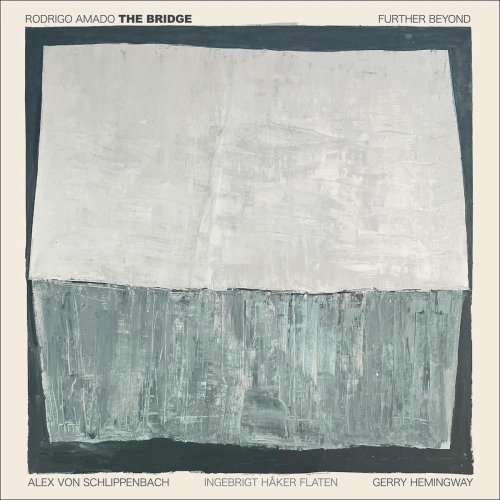
Artist: Rodrigo Amado, Rodrigo Amado The Bridge, Alexander von Schlippenbach, Ingebrigt Håker Flaten, Gerry Hemingway
Title: Further Beyond
Year Of Release: 2025
Label: Trost
Genre: Jazz
Quality: FLAC (tracks)
Total Time: 51:48
Total Size: 322 MB
WebSite: Album Preview
Tracklist:Title: Further Beyond
Year Of Release: 2025
Label: Trost
Genre: Jazz
Quality: FLAC (tracks)
Total Time: 51:48
Total Size: 322 MB
WebSite: Album Preview
1. A Change Is Gonna Come (Live) (17:11)
2. Further Beyond (Live) (26:42)
3. That's How Strong Our Love Is (Live) (7:56)
Approximately three quarters of a century have passed since Harold Rosenberg proclaimed contemporary paintings to be acts of criticism as much as creation. Susan Sontag pointed out slightly more than 50 years ago that the most interesting new art centered on references to the history of its medium. Throughout that period, jazz was both acutely critical and referential, as musicians tweaked, reframed, and appropriated, what they heard to create a running, Confucian-like commentary on the morphology of jazz vernacular.
This continued even as musicians explored modes, Indian music, and the advents of the Second Viennese School. However, they became less interested in messaging new iterations of hipness, and became increasingly driven by an idealized “Freedom.” For some, freedom was a destination, artistically and spiritually; for others, it was agency, socially and politically. Whether someone sought a freedom of, a freedom to, or a freedom from, through their work, it contributed to Freedom remaining the dominant organizing principle of jazz and improvised music.
Freedom is not monolithic: what it is and represents differs from musician to musician, depending in large measure on their origins, and the persons and events that motivated them to work in jazz and improvised music. There is certainly considerable overlap in how Rodrigo Amado, Alexander von Schlippenbach, Gerry Hemingway, and Ingebrigt Håker Flaten, view the musical expression of freedom, largely through the lens of the movement the pianist had a seismic impact in shaping.
Yet, it is the outlying areas of the Venn diagram that sharpen the picture of how each member of The Bridge addresses the issue of freedom, beginning with where and when they came of age. Just several years after the end of the American occupation of West Germany, Schlippenbach studied composition with Bernd Alois Zimmerman by day, and played Horace Silver tunes at night. He triangulated these influences in the quintet with Manfred Schoof and Gerd Dudek, and then came the quantum leap that was “Globe Unity.” At 17, Hemingway began supporting himself playing jazz in beleaguered early ‘70s New Haven and soon hosted a radio program of world music, experiences preparing him for the city’s late-decade burst of creative music centered around Wadada Leo Smith and contemporaries Anthony Davis, Mark Helias, and George Lewis. Amado’s generation was the first to become adults in a democratic Portugal, while Håker Flaten’s was the first to benefit from Norway’s oil boom.
The rest, as they say, is history – one that is now multi-generational and voluminously documented and, most importantly, living. Granted: “History” is a somewhat problematic concept when discussing improvised music, which, at the outset, was a repudiation of historical conventions, and whose modus operandi – being in the moment – is all but antithetical to historical consciousness. Certainly, there is a detailed chronology spidering out from initial hubs like London and Berlin to all corners of the world – one with an abundance of great men and a paucity of great women – that gives continuity and context to a sprawl of activities with different motivations and characteristics at different times and places.
History is therefore lacking as the sole basis for dialogue and discourse about improvised music; it needs to be coupled with culture. It may strain credulity to suggest that an international network of itinerant outsider musicians has a culture of its own; but, if custom is at the heart of culture – hospitality, the sharing of work, its fruits and its hardships, and the remembrance of great nights and those now gone – it is a culture as rich as it is unique.
The history and culture of improvised music have been shaped by manifold concepts of freedom, but one in particular explains Amado’s aesthetic. It is his reference to Sam Rivers’ declaration: “Freedom does not mean unconditional renunciation of melody and rhythm, but the freedom to choose what I want to play.” It was this freedom to that led Rivers to punctuate his epic trio sets with grooves and essays on perennials like “Wheatleigh Hall.” Rivers also eschewed the labeling of his music as improvisation, which he said required existing material, instead favoring “spontaneous creation.”
Amado seeks such spontaneous creation with The Bridge. There are no prior discussions pertaining to any aspect of performance. Amado is secure in the knowledge that they will make a compelling collective statement. That security is culturally endowed. Consider the corporate team-building exercise of a person falling backwards to be caught by his coworkers: now consider any number of musicians doing so simultaneously, with each other for support. That has been a daily occurrence in improvised music for over a half-century.
Further Beyond confirms Amado’s security in the quartet to be well founded; after all, the members of The Bridge have, in the aggregate, nearly two hundred years of experience in spontaneous creation. Their mutuality was there from the outset (it should be noted that their previous CD, Beyond the Margins, documented their debut performance). It has grown since. Schlippenbach remarked years ago that it was the second-by-second interactions with Evan Parker and Paul Lovens that kept his trio vital for decades. Much the same can be said of The Bridge on Further Beyond. There is a constant unfolding of ideas, a pungent banter, and a push-pull between surprise and inevitability. It speaks to the history and culture of improvised music – and its commitment to freedoms of, to, and from – with an authority that, frankly, is found on too few recent recordings.
Rodrigo Amado – tenor saxophone
Alexander Von Schlippenbach – piano
Ingebrigt Håker Flaten – double bass
Gerry Hemingway – drums, voice
This continued even as musicians explored modes, Indian music, and the advents of the Second Viennese School. However, they became less interested in messaging new iterations of hipness, and became increasingly driven by an idealized “Freedom.” For some, freedom was a destination, artistically and spiritually; for others, it was agency, socially and politically. Whether someone sought a freedom of, a freedom to, or a freedom from, through their work, it contributed to Freedom remaining the dominant organizing principle of jazz and improvised music.
Freedom is not monolithic: what it is and represents differs from musician to musician, depending in large measure on their origins, and the persons and events that motivated them to work in jazz and improvised music. There is certainly considerable overlap in how Rodrigo Amado, Alexander von Schlippenbach, Gerry Hemingway, and Ingebrigt Håker Flaten, view the musical expression of freedom, largely through the lens of the movement the pianist had a seismic impact in shaping.
Yet, it is the outlying areas of the Venn diagram that sharpen the picture of how each member of The Bridge addresses the issue of freedom, beginning with where and when they came of age. Just several years after the end of the American occupation of West Germany, Schlippenbach studied composition with Bernd Alois Zimmerman by day, and played Horace Silver tunes at night. He triangulated these influences in the quintet with Manfred Schoof and Gerd Dudek, and then came the quantum leap that was “Globe Unity.” At 17, Hemingway began supporting himself playing jazz in beleaguered early ‘70s New Haven and soon hosted a radio program of world music, experiences preparing him for the city’s late-decade burst of creative music centered around Wadada Leo Smith and contemporaries Anthony Davis, Mark Helias, and George Lewis. Amado’s generation was the first to become adults in a democratic Portugal, while Håker Flaten’s was the first to benefit from Norway’s oil boom.
The rest, as they say, is history – one that is now multi-generational and voluminously documented and, most importantly, living. Granted: “History” is a somewhat problematic concept when discussing improvised music, which, at the outset, was a repudiation of historical conventions, and whose modus operandi – being in the moment – is all but antithetical to historical consciousness. Certainly, there is a detailed chronology spidering out from initial hubs like London and Berlin to all corners of the world – one with an abundance of great men and a paucity of great women – that gives continuity and context to a sprawl of activities with different motivations and characteristics at different times and places.
History is therefore lacking as the sole basis for dialogue and discourse about improvised music; it needs to be coupled with culture. It may strain credulity to suggest that an international network of itinerant outsider musicians has a culture of its own; but, if custom is at the heart of culture – hospitality, the sharing of work, its fruits and its hardships, and the remembrance of great nights and those now gone – it is a culture as rich as it is unique.
The history and culture of improvised music have been shaped by manifold concepts of freedom, but one in particular explains Amado’s aesthetic. It is his reference to Sam Rivers’ declaration: “Freedom does not mean unconditional renunciation of melody and rhythm, but the freedom to choose what I want to play.” It was this freedom to that led Rivers to punctuate his epic trio sets with grooves and essays on perennials like “Wheatleigh Hall.” Rivers also eschewed the labeling of his music as improvisation, which he said required existing material, instead favoring “spontaneous creation.”
Amado seeks such spontaneous creation with The Bridge. There are no prior discussions pertaining to any aspect of performance. Amado is secure in the knowledge that they will make a compelling collective statement. That security is culturally endowed. Consider the corporate team-building exercise of a person falling backwards to be caught by his coworkers: now consider any number of musicians doing so simultaneously, with each other for support. That has been a daily occurrence in improvised music for over a half-century.
Further Beyond confirms Amado’s security in the quartet to be well founded; after all, the members of The Bridge have, in the aggregate, nearly two hundred years of experience in spontaneous creation. Their mutuality was there from the outset (it should be noted that their previous CD, Beyond the Margins, documented their debut performance). It has grown since. Schlippenbach remarked years ago that it was the second-by-second interactions with Evan Parker and Paul Lovens that kept his trio vital for decades. Much the same can be said of The Bridge on Further Beyond. There is a constant unfolding of ideas, a pungent banter, and a push-pull between surprise and inevitability. It speaks to the history and culture of improvised music – and its commitment to freedoms of, to, and from – with an authority that, frankly, is found on too few recent recordings.
Rodrigo Amado – tenor saxophone
Alexander Von Schlippenbach – piano
Ingebrigt Håker Flaten – double bass
Gerry Hemingway – drums, voice
Download Link Isra.Cloud
Rodrigo Amado The Bridge - Further Beyond (Live) FLAC.rar - 322.9 MB
Rodrigo Amado The Bridge - Further Beyond (Live) FLAC.rar - 322.9 MB
![Charles Fox, Mike Ryan - Salsa 'Til Dawn (Live) (2025) [Hi-Res] Charles Fox, Mike Ryan - Salsa 'Til Dawn (Live) (2025) [Hi-Res]](https://img.israbox.com/img/2025-12/10/o2ltd2fg3orj0az47cba5qji6.jpg)
![Milton Delugg - The Golden Age of Science Fiction, Vol. 9 (Santa Claus Conquers The Martians) (2025) [Hi-Res] Milton Delugg - The Golden Age of Science Fiction, Vol. 9 (Santa Claus Conquers The Martians) (2025) [Hi-Res]](https://img.israbox.com/img/2025-12/09/n7lpfby3fs58z7v05wdedarcn.jpg)
